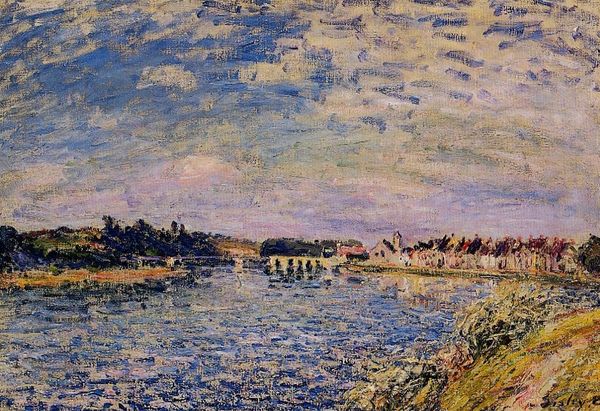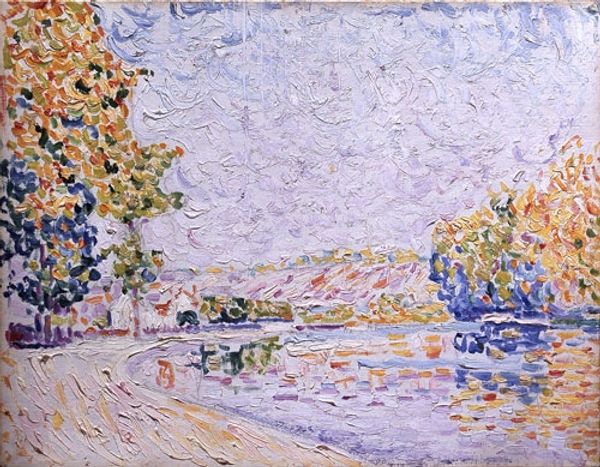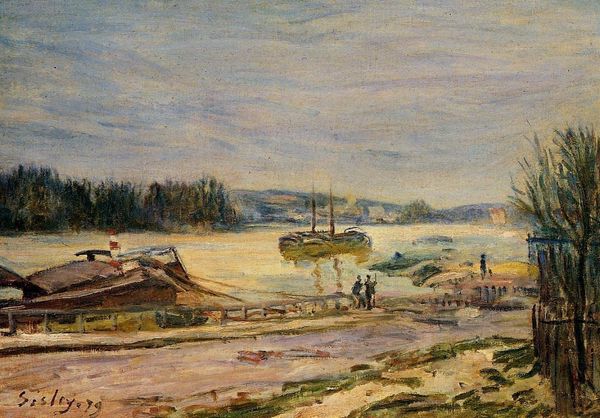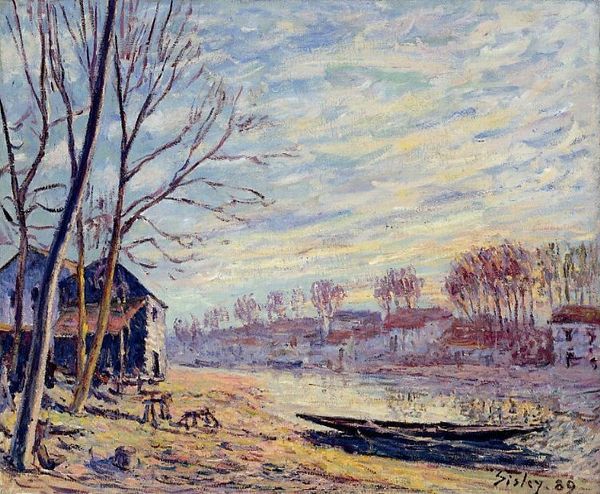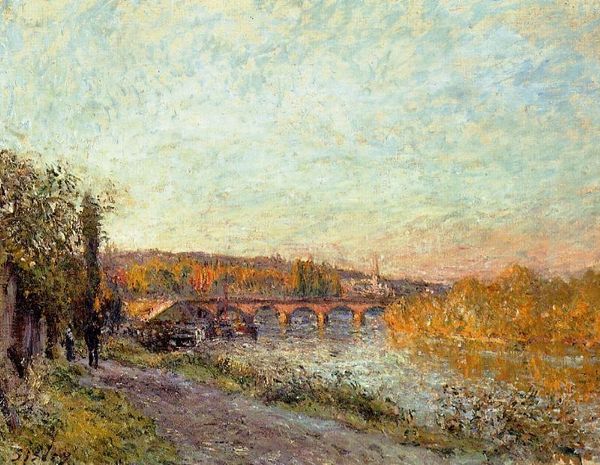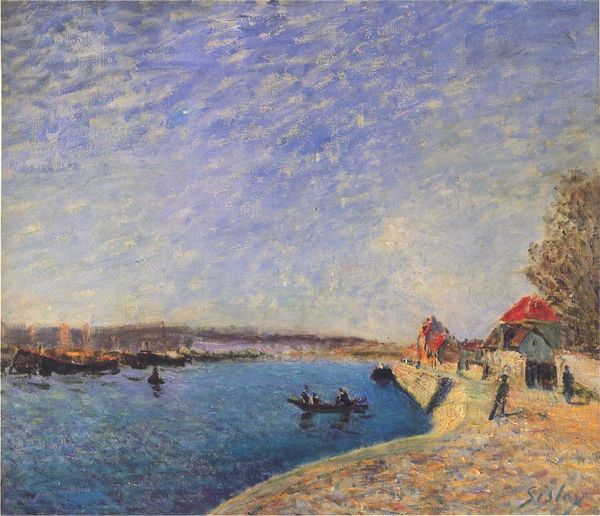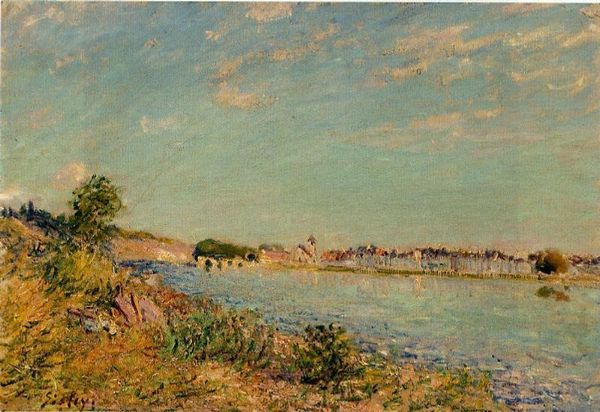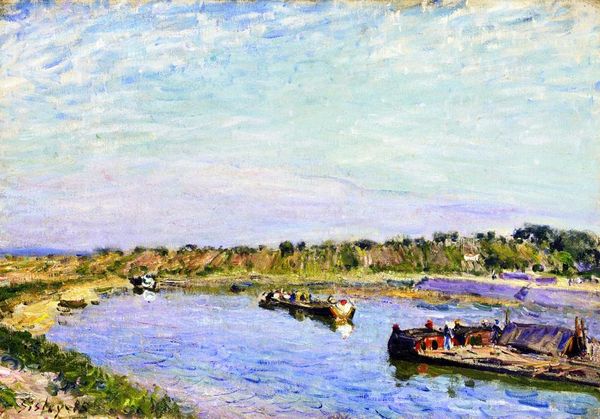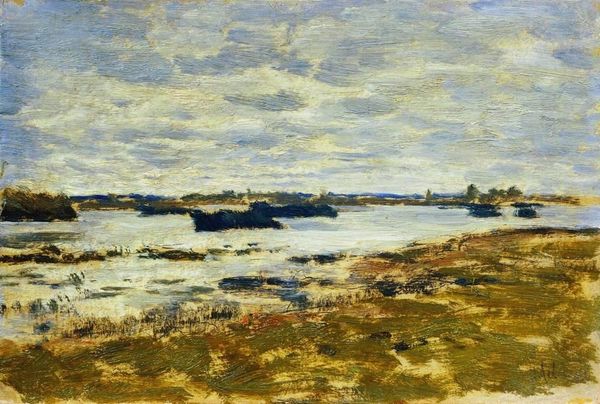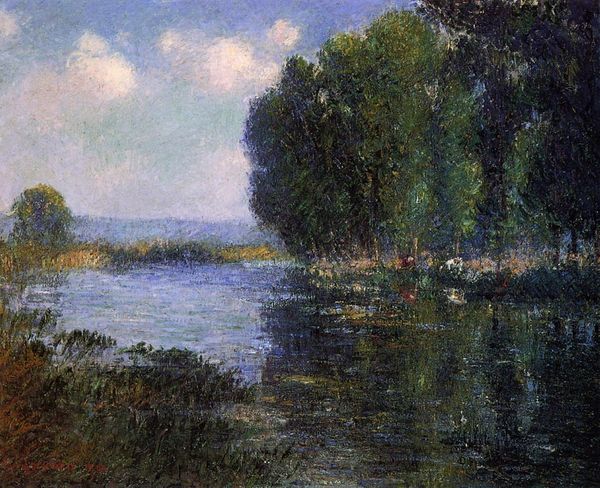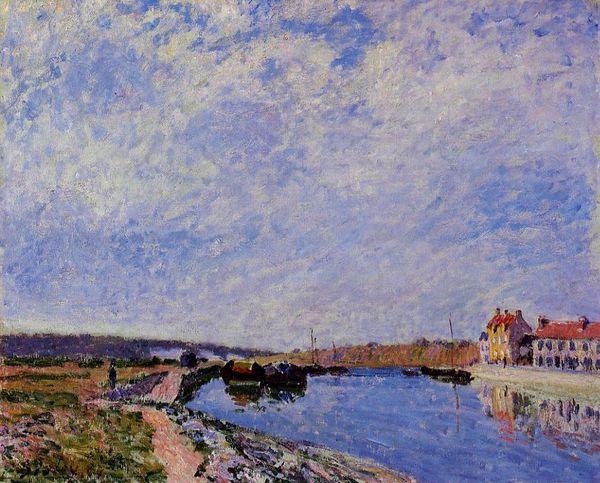
painting, plein-air, oil-paint
#
portrait
#
sky
#
painting
#
impressionism
#
impressionist painting style
#
plein-air
#
oil-paint
#
landscape
#
river
#
impressionist landscape
#
oil painting
#
cityscape
Copyright: Public domain
Editor: So, this is Armand Guillaumin’s "Le Pont des Arts," painted in 1878. It's an oil on canvas, a classic impressionist cityscape. It really captures the hustle and bustle, almost industrial feel of Paris at that time, don’t you think? What strikes you most when you look at it? Curator: What immediately jumps out is the depiction of urban labor right alongside an iconic Parisian scene. Notice the figures on the left, seemingly involved in loading or unloading materials; and the rather dominant, if not clumsily rendered, sand heap. Guillaumin presents us with not just the beautiful bridge and Parisian skyline, but also with the very industry and infrastructure that allows Paris to *be* Paris. How do you think this emphasis on labor contributes to the painting's meaning? Editor: That’s a great point, I hadn’t really considered the workers' importance beyond being just part of the scenery. It definitely shifts the focus from idealized beauty to something more grounded and... political, maybe? Curator: Exactly. Remember that Impressionism wasn’t just about pretty landscapes; it was also about representing modern life. And what *is* modern life without work, without the social stratification visible even in something as seemingly simple as a cityscape? Consider how this image, readily available for public consumption in exhibitions or prints, shapes perceptions of Parisian identity itself. Editor: So it's not just about the bridge, but about who gets to use it, and who keeps the city running in the first place. Curator: Precisely. And consider what is *not* depicted, too. Who is missing from this picture of modern Paris? Where are the centers of political power and who is denied access to them? Editor: This really changes how I see the painting. I came in thinking pretty bridge, now I am thinking about socioeconomic context! Curator: That's the power of art history. To connect what we see with the world around it, and reveal the societal structures behind even the most serene images.
Comments
No comments
Be the first to comment and join the conversation on the ultimate creative platform.
